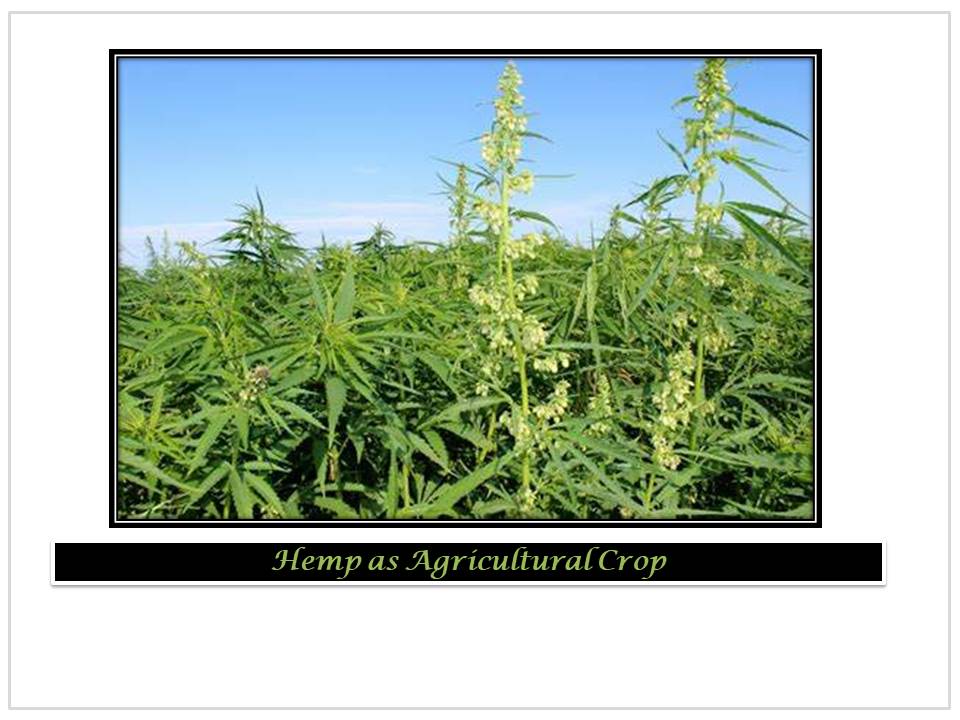Title
Hemp as Agricultural Crop
Authors
Muhammad Arshad Ullah*a and Ali Hassanb
aPakistan Agricultural Research Council, Islamabad, Pakistan.
bPMAS- University of Arid Agriculture, Rawalpindi, Pakistan.
*Corresponding author E-mail address: arshadullah1965@gmail.com (Muhammad Arshad Ullah)
Article History
Publication details: Received: 11th October 2022; Revised: 31st December 2022; Accepted: 31st December 2022; Published: 27th April 2023
Cite this article
Arshad Ullah M.; Hassan A. Hemp as Agricultural Crop. Green Rep., 2023, 4(10), 13-22.

Abstract
Agriculturally, hemp is a relatively high-yielding crop, with low or no pesticide requirement, and modest demands for fertilizer. Due to these features, its introduction into the intensive farming systems could be constitute a long-term strategy in maintaining farming systems and practices that are particularly favorable to environmental and climate policy goals.
Hemp (Cannabis sativa L.) belongs to the oldest and most known versatile plants. It was cultivated all over the world, due to its fast growth and low-demand in resources. However, demand for renewable raw materials has recently increased and hemp cultivation has returned as a sustainable and high yielding crop that can be grown for a multitude of products and industrial applications. Hemp has also participated in many agro-industrial fields such as agriculture, textiles, bio-composite, paper-making, automotive, construction, bio-fuel, functional food, oil, cosmetics, personal care and pharmaceutical industry, because of the high-quality cellulose in its stems, the high-quality oil in seeds and valuable resins in the inflorescence. In addition, industrial hemp varieties (cultivated for stem fibres and seeds) registered in the European Catalogue has to contain less than 0.2% D9-tetrahydrocannabinol (THC) according to EC regulation 809/2014.
Hemp is cultivated mainly for its fibrous stem but the most profitable practice seems to be the combination of utilizing both fibre and seed in multiple uses and available varieties may present noticeably divergent characteristics, making them more suitable for different end products.
Cultivation of industrial hemp to produce insecticides displays the following strengths: (i) lack of similar products (i.e. hemp-based insecticides); (ii) low costs of raw material and availability of agricultural lands for its cultivation; (iii) increasing demand for eco-friendly and safe products; (iv) possibility to split the end products in other fields (e.g., cosmetics and pharmaceutics). Supporting literature comes from the recent investigations, who found that the hemp essential oil is effective against larvae of mosquito vectors and moth pests, as well as against flies and snails.
Furthermore, we explored the insecticidal effects of industrial hemp cultivated in central Italy on a panel of economically important target insects, including two vectors of public health importance, i.e., the mosquito Culex quinquefasciatus Say (Diptera: Culicidae), and the house fly Musca domestica L. (Diptera: Muscidae) and two insect pests attacking crops of high economic interest, i.e., the aphid Myzus persicae (Sulzer) (Rhyncota: Aphididae), and the tobacco cutworm Spodoptera littoralis (Boisduval) (Lepidoptera: Noctuidae). In particular, C. quinquefasciatus is recognized as a vector of lymphatic filariasis, West Nile and Zika virus, while M. persicae and S. littoralis are able to feed on more than 400 and 80 plant species, respectively, with severe economic damages for farmers.
Keywords
Cannabis sativa; hemp; Marijuana; Cannabidiol (CBD) oil; crop; agriculture